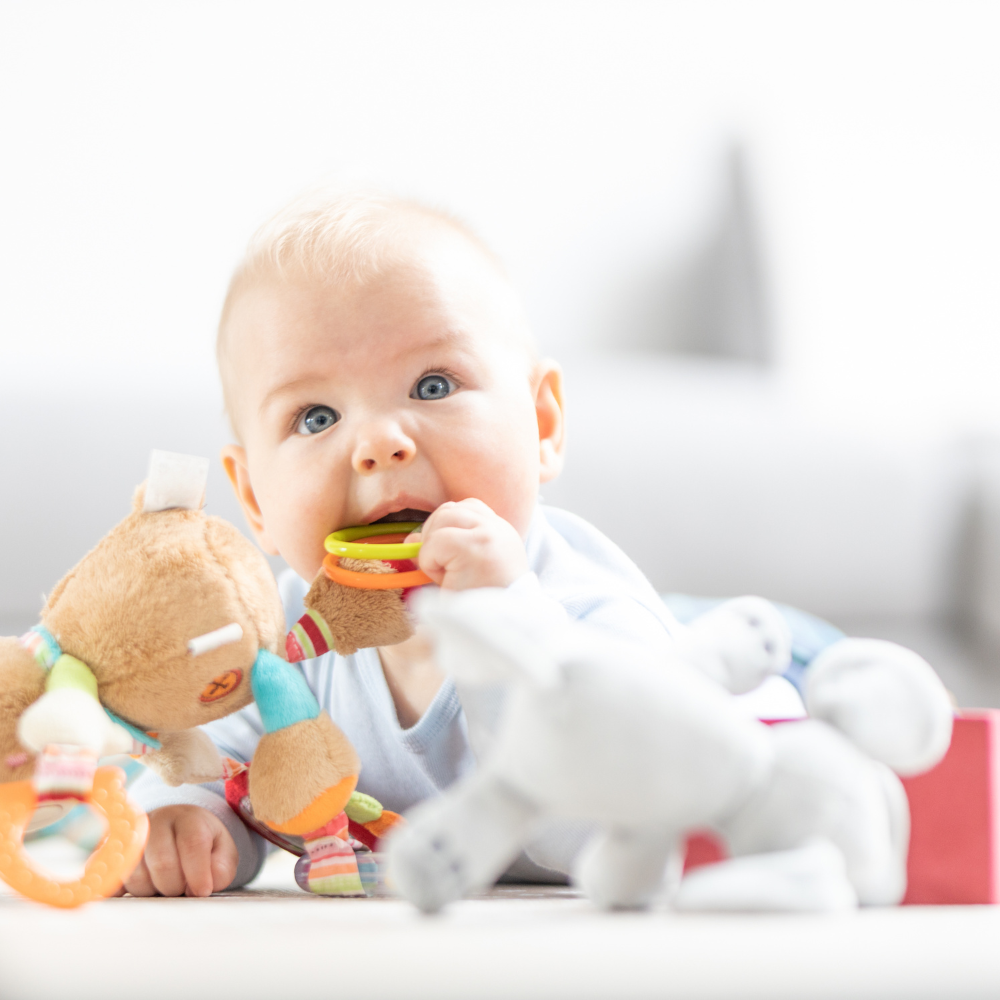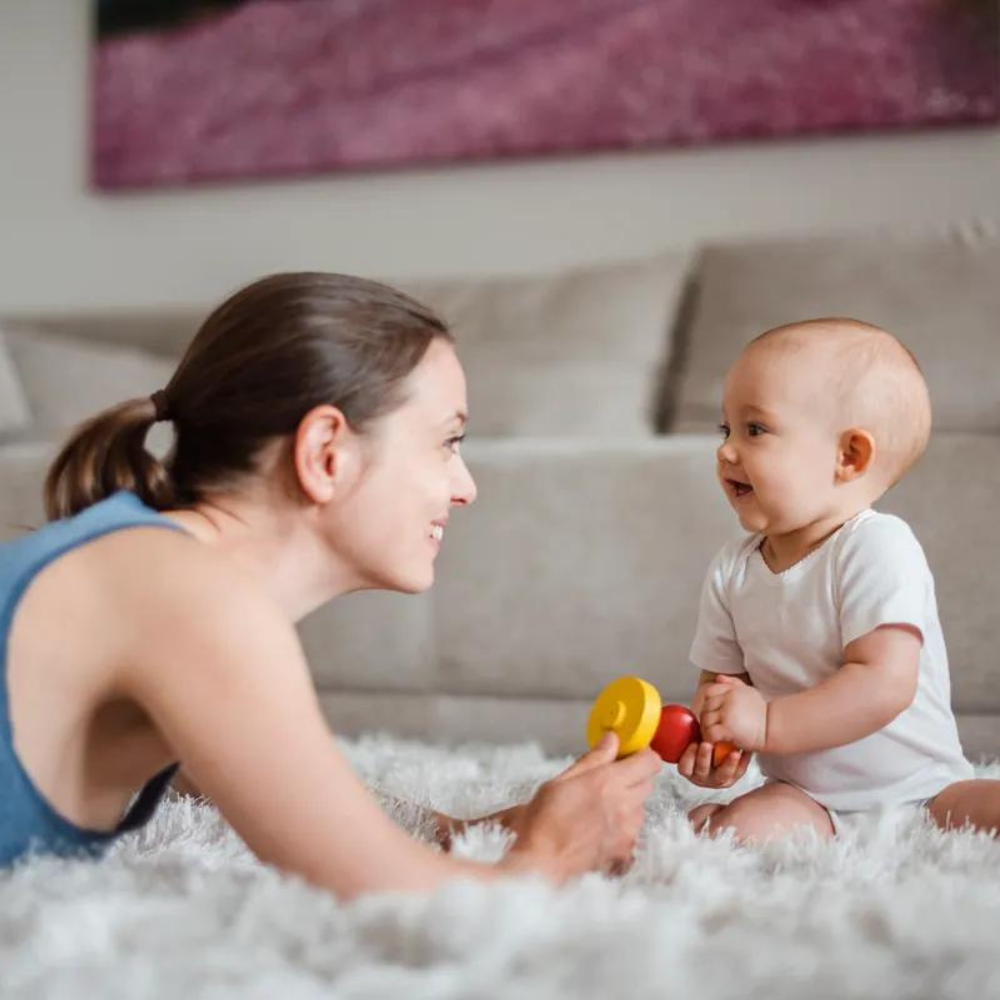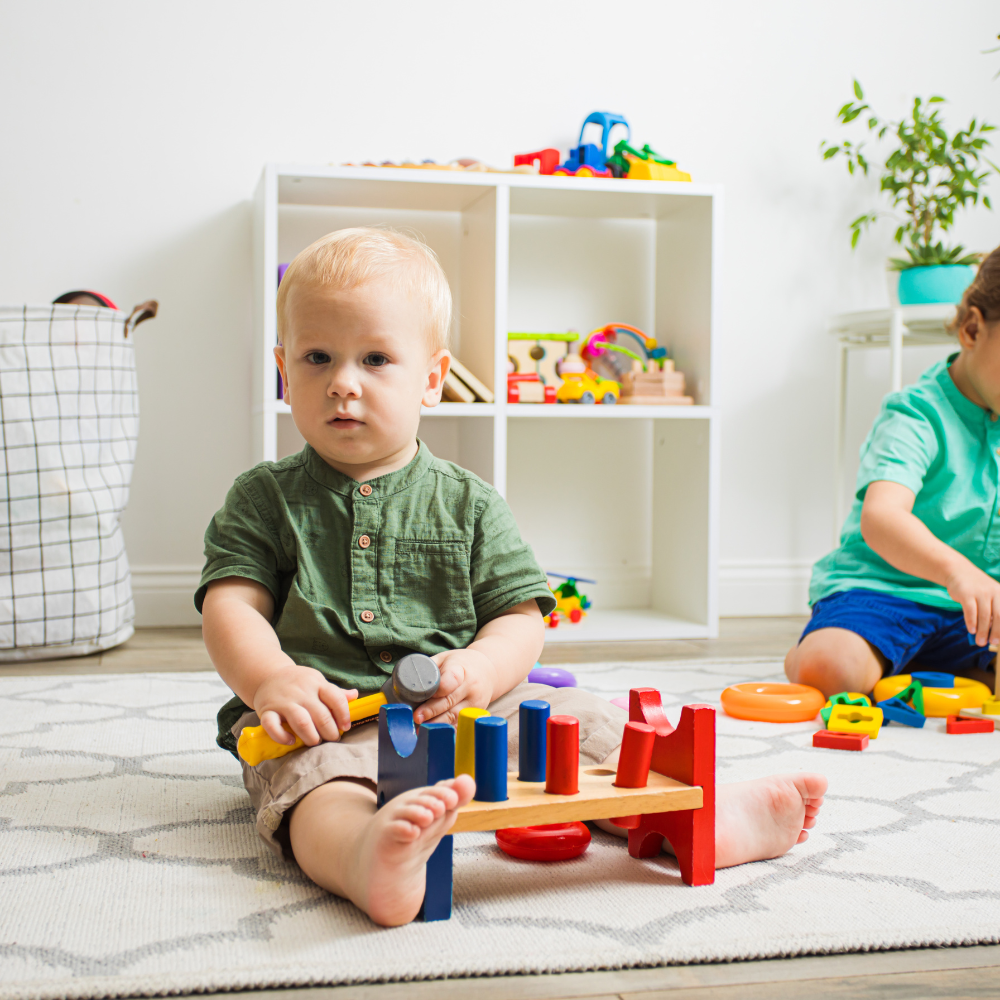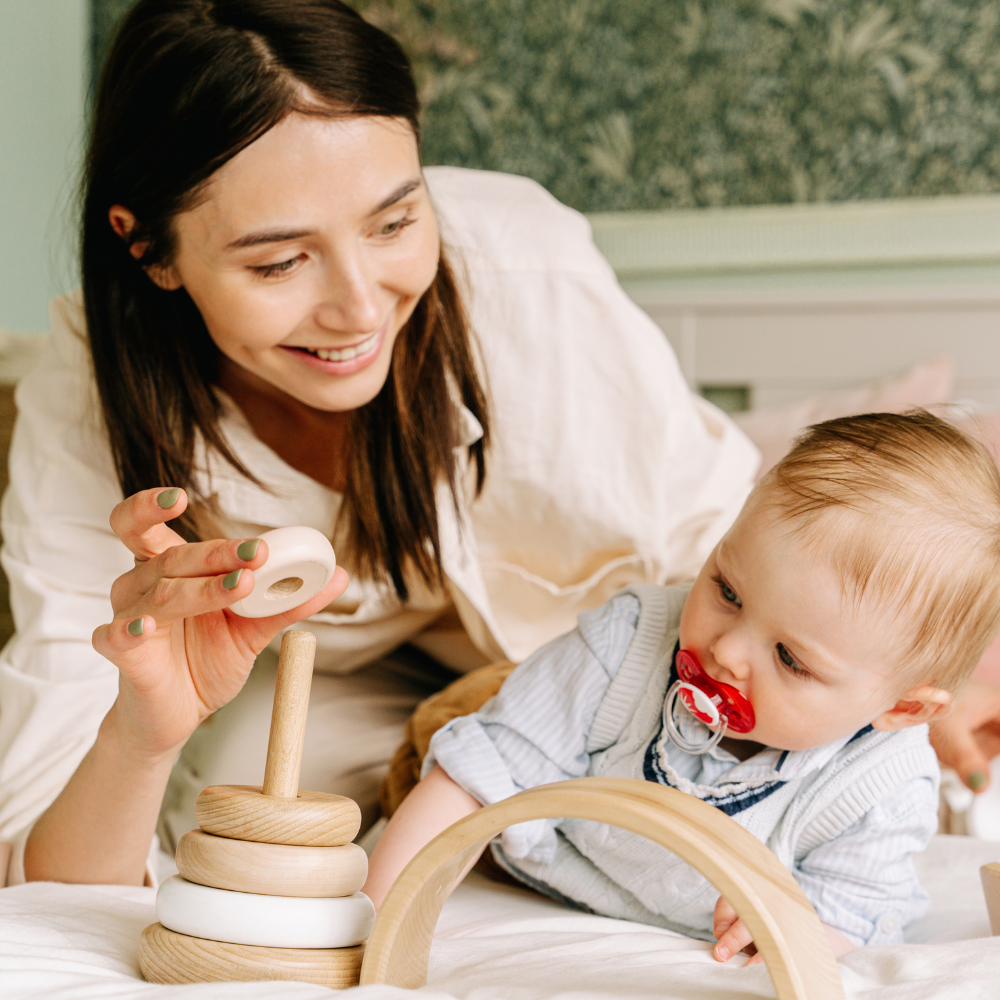Babies are curious little beings who constantly explore and discover their surroundings. As they grow and develop, play becomes an essential part of their daily routine. Playing with toys not only keeps babies entertained but also helps in developing various skills such as physical, cognitive, emotional, and social skills.
Many parents wonder when their baby will start playing with toys or showing interest in them. The answer to this question can vary from one child to another as every baby has their own pace of development.
However, there are some general guidelines that can help parents understand when babies typically start playing with toys and what types of toys are suitable for different stages of development.
What is play and why is it important for babies?

Play is any activity that is done for enjoyment, relaxation, or self-expression rather than for a serious or practical purpose. For babies, play is their way of learning about the world and developing important skills that will help them in life.
There are different types of play that babies engage in, such as physical play (rolling, crawling, climbing), object play (playing with toys), social play (interacting with others), and imaginative/pretend play (using their imagination). Each type of play plays a crucial role in a baby's development.
Through physical play, babies learn to use their bodies and develop gross motor skills like crawling, walking, and running. Object play helps them to develop fine motor skills and hand-eye coordination as they grasp, manipulate, and explore toys.
Social play teaches babies how to interact with others, take turns, share, and communicate. Imaginative/pretend play allows babies to use their creativity and imagination while engaging in role-playing activities.
Play is important for a baby's overall development as it helps them learn about themselves, others, and the world around them. It also promotes brain development by strengthening neural connections and improving cognitive abilities such as problem-solving, decision-making, and memory.
When do babies typically start playing with toys?

Babies are born with a natural instinct to explore their environment, and play is one of the ways they do it. While some babies may start showing interest in toys as early as two months, others may take up to six months or more. Generally, most babies start actively playing with toys around three to four months of age. However, every baby is different, and there is no specific age for when they will start playing with toys.
There are certain signs that indicate a baby's readiness to engage in object play. These include being able to grasp objects (around three months), reaching for objects (around four months), and bringing objects to their mouth (around five months). As they continue to grow and develop, babies will become more interested in exploring toys, manipulating them, and interacting with them.
It is important to note that babies may not have a clear distinction between playtime and other daily activities. They may start playing with toys during feeding or diaper changing as their curiosity knows no bounds. Therefore, it is essential for parents to provide a safe and stimulating environment for babies to explore and play freely at any time.
Best Toys for Babies By Age

As babies grow and develop, their interests, abilities, and preferences change. It is important to choose age-appropriate toys that will keep them engaged and help in their development at each stage.
Newborn to four months
During the initial months, babies focus on adjusting to their new surroundings. Their vision is still developing, drawing them to high-contrast colors and patterns. Opt for soft toys like plush animals, rattles, and textured items for newborns. These toys offer tactile and auditory stimulation, supporting sensory and motor skill development.
Introduce mobiles and playmats with hanging toys to help babies track objects, promoting hand-eye coordination. As infants explore by mouthing objects, prioritize safe, non-toxic toys without small parts to prevent choking hazards. For 4-month-olds, consider toys like soft blocks, teething rings, crinkly toys, and simple musical instruments to encourage sensory exploration and interaction.
Four to eight months
At this stage, babies are more alert and active. They can hold objects with a better grip and will start reaching out to grab toys intentionally.
Softballs, stacking rings, and textured blocks are suitable for this age as they encourage grasping, transferring objects from one hand to another, and developing fine motor skills. Toys that make sounds or have moving parts, such as musical toys or pop-up toys, also become more engaging at this stage.
Babies may also begin showing interest in cause-and-effect play by dropping objects and watching them fall or pressing buttons to make toys light up and play music. 4 To 8 Months Toys are the perfect time to start introducing simple puzzles and shape sorters. These toys help develop problem-solving skills and hand-eye coordination.
Eight to twelve months
By eight to twelve months, babies are becoming more mobile and starting to crawl or walk. They are also developing their problem-solving skills through trial-and-error play. Toys that encourage movement, such as push-and-pull toys, ride-on toys, and balls, are ideal for this stage. Building blocks, shape sorters, and simple puzzles can also help in developing hand-eye coordination and problem-solving abilities.
Babies at this age also enjoy imitating adults, so toys that mimic real-life objects like toy phones, keys, and kitchen sets can be both entertaining and educational. As they become more coordinated, toys with smaller parts can be introduced under close supervision.
One year and older
At one year old and beyond, children's play becomes more imaginative and complex. They begin to engage in pretend play and create stories using their toys. Dolls, action figures, puppets, dress-up clothes, and playsets are great for encouraging this type of play.
As their language skills improve, toys that promote vocabulary and communication, such as books, puzzles with simple pictures or words, and shape sorters with different shapes and colors, can be introduced. At this age, children also enjoy playing with others, so toys that encourage social interaction like board games and outdoor playsets are great options.
So these are some of the best toy choices for each stage of a baby's first year. It is important to remember that every child develops at their own pace, so parents should observe and determine which toys their child shows interest in and find joy in watching them explore and learn through play.
Can toys really help in a baby's development?
The short answer is yes, toys can play a significant role in a baby's development. Play is essential for babies as it helps them develop cognitive, physical, and social-emotional abilities.
Toys that stimulate the senses and encourage exploration can aid in brain development by creating new neural connections. As babies interact with different textures, sounds, and colors through their toys, they are exposed to various sensory experiences that help them make sense of the world around them.
Playing also allows babies to practice and develop physical skills such as grasping, reaching, and crawling, which are crucial for their overall development. For example, toys that encourage tummy time can help strengthen neck and arm muscles, preparing them for crawling and other physical milestones.
Toys can also promote social-emotional development by providing opportunities for babies to interact with others and develop relationships through play. As they engage in imaginative play with dolls or toy animals, they learn about empathy and emotions.
Tips for choosing the right toys for your baby

When it comes to choosing toys for your baby, there are a few things to keep in mind. First and foremost, consider safety. Here are some tips for selecting safe and appropriate toys:
- Choose age-appropriate toys: As mentioned earlier, babies develop at different rates. Always consider your baby's age when selecting toys to ensure they are both safe and beneficial for their stage of development.
- Avoid small parts: Small parts can be a choking hazard for young children. Check the recommended age on the toy packaging and avoid toys with small parts if your child is not yet ready for them.
- Check for non-toxic materials: Babies tend to explore through their mouths, so it is essential to make sure that all toys are made from safe and non-toxic materials.
- Consider durability: Babies can be rough on their toys, so look for toys made with sturdy materials that can withstand some wear and tear.
- Rotate toys: It can be tempting to buy many toys for your baby, but rotating them every few weeks can help keep things fresh and exciting.
With these tips in mind, you can choose toys that will not only provide entertainment for your baby but also aid in their development and growth. Remember to always supervise your child during playtime and quality time have fun watching them learn and explore through play!
FAQs
When do babies start playing with dangling toys?
During the newborn phase, babies begin to notice dangling toys. Although they might not interact much initially, by 2 to 3 months old, they start reaching for and batting at these toys, engaging more actively as their motor skills develop.
What types of baby toys are essential for a baby's development?
Essential baby toys include stuffed animals, brightly colored toys, and shaking toys. These items help stimulate a baby’s senses and encourage interaction through touch and sound, playing a significant role in their cognitive and motor development.
How can brightly colored toys impact a baby's life?
Brightly colored toys are very stimulating in a baby's life. The vivid colors help attract the baby's attention and can improve visual tracking. These toys often become a source of fascination and all the entertainment your baby needs at this stage.
Why is playtime also quality time for babies and parents?
Playtime is quality time because it allows for bonding between the parent and baby. Activities like peek-a-boo or simply playing with stuffed animals or other toys foster emotional connections and provide a nurturing environment where babies can learn and grow.
Should parents rotate the same toys or introduce new ones frequently?
It's beneficial to rotate the same toys and introduce new ones periodically. This keeps the baby's environment stimulating and challenging, helping with cognitive development and keeping their interest in baby play continually refreshed.
How do babies learn to grasp toys, and why is this important?
Babies typically start to grasp toys around 3 to 4 months of age. This skill is crucial as it develops hand-eye coordination and fine motor skills. Grasp toys are designed to be easy for little hands to hold, aiding in this developmental stage.
At what age can babies engage in games like peek-a-boo?
Peek-a-boo can be introduced once babies are about 4 to 6 months old, as they begin to understand object permanence—the idea that things continue to exist even when not seen. This game delights babies and is an excellent tool for emotional and social development.
Conclusion
Toys are an essential part of a baby's development, and choosing the right ones can make a significant impact on their growth. By selecting age-appropriate, safe, and stimulating toys, parents can help their little ones learn and develop important skills while having fun.
From sensory toys for newborns to imaginative play items for toddlers, there is a wide range of options available that cater to different stages of development. It is also crucial to remember that every child develops at their own pace, so observing your child's interests and abilities can guide you in selecting the best toys for them.
With proper supervision and a little bit of creativity, playtime can be both fun and beneficial for your baby's growth and development. So go ahead and enjoy watching your child learn and grow through playtime!
Subscribe to our email newsletter and unlock access to members-only content and exclusive updates.

Comments